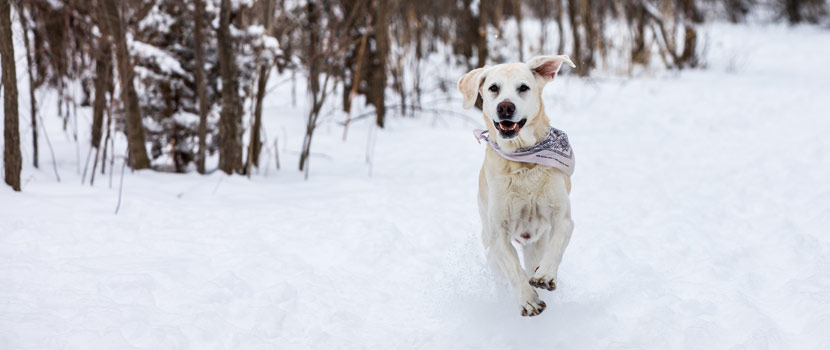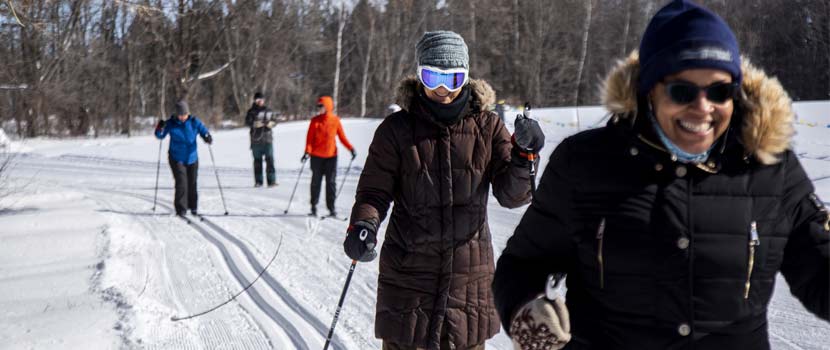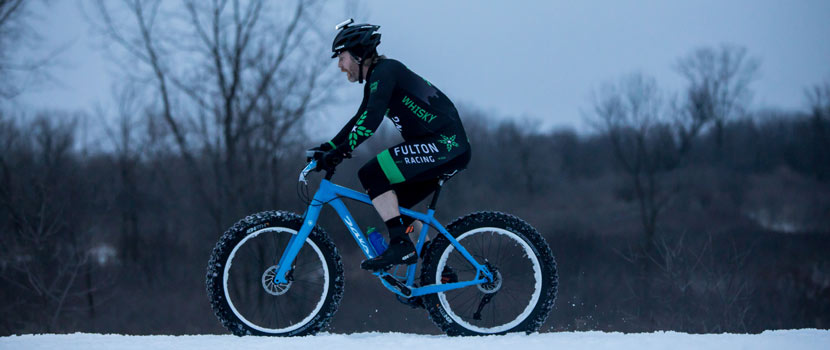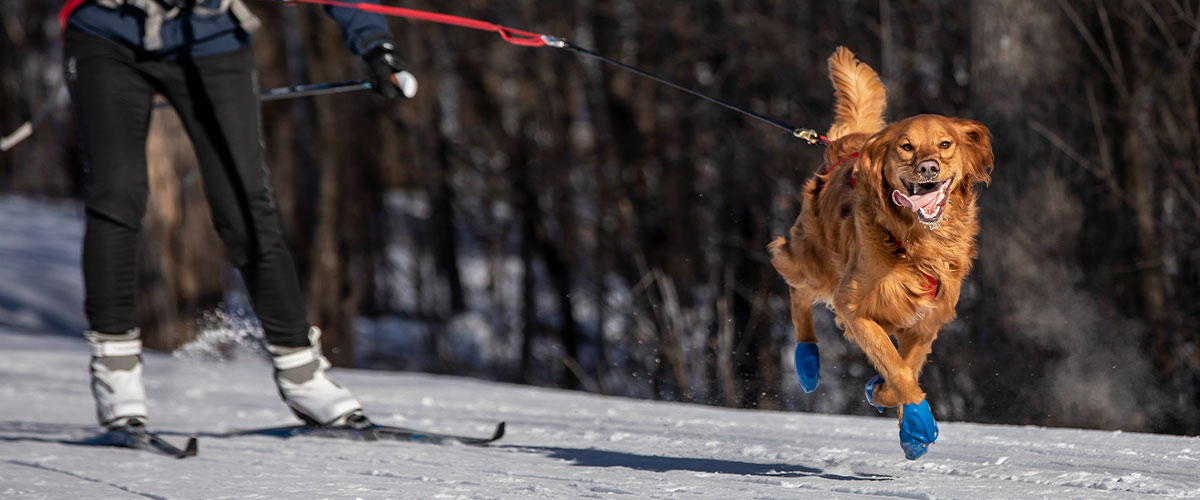
"Hike! Hike! Let’s go! Easy… Whooaaa!"
Skijoring is a rush like no other as you glide and stride on Nordic skis behind your enthusiastic canine pal.
This sport is pretty new to me and my golden doodle, Jasper. In fact, I’m relatively new to Minnesota winters and Nordic skiing in general.
I started skijoring in 2016 after moving to Minnesota from southern Indiana, where snow rarely accumulates. In my journey to embrace winter, I challenged myself to try something new each year. Skijoring was the challenge in my fourth year — and I’m hooked!
Read on to learn more about our skijoring journey and how to get started.
I encourage you to try something new each winter, too! It’s really rewarding to learn how to stay warm and have fun outside, even in subzero weather.
WHAT IS SKIJORING?
In Minnesota, skijoring refers to skiing with your dog. The word is derived from the Norwegian skikjøring or "ski driving." The skier and dog both wear specialized harnesses and are attached to each other by a long lead line with a bungee.
While skijoring is most commonly associated with dogs, the sport encompasses any form of being pulled behind an animal while on skis. It likely began in the Laplands of Scandinavia as a form of transportation where animals such as reindeer and horses pulled a skier over difficult winter terrain.
Later, likely influenced by Alaskan sled dog culture, the concept was adjusted to include dogs.
WHAT DOG BREEDS, SIZES AND AGES CAN SKIJOR?
Just about any breed can skijor. If you watch a skijoring event, you’ll notice that the dogs are very diverse, ranging from huskies and hounds to labs and shepherding breeds to mutts and everything in between.
Recreationally, simply skiing with your dog is considered skijoring, even if the dog is not pulling you. If you are not being pulled, you do not need a large dog. If you are being pulled, experts recommend the dog be at least 35 pounds and have lots of energy and a desire to run.
Dogs under a year old should not pull or run for long distances because their joints and bones are still developing. Although young dogs should not pull or run long distances, putting them in a harness and getting them used to the sound of skis can be very valuable.
When Jasper was a young pup, she would romp alongside me while I slowly skied a short distance. I would carry her back to the car when she got tired of playing.
While these are basic guidelines, be sure to consult your veterinarian before starting. There are many considerations that may impact your dog’s health, including when to feed and water them.
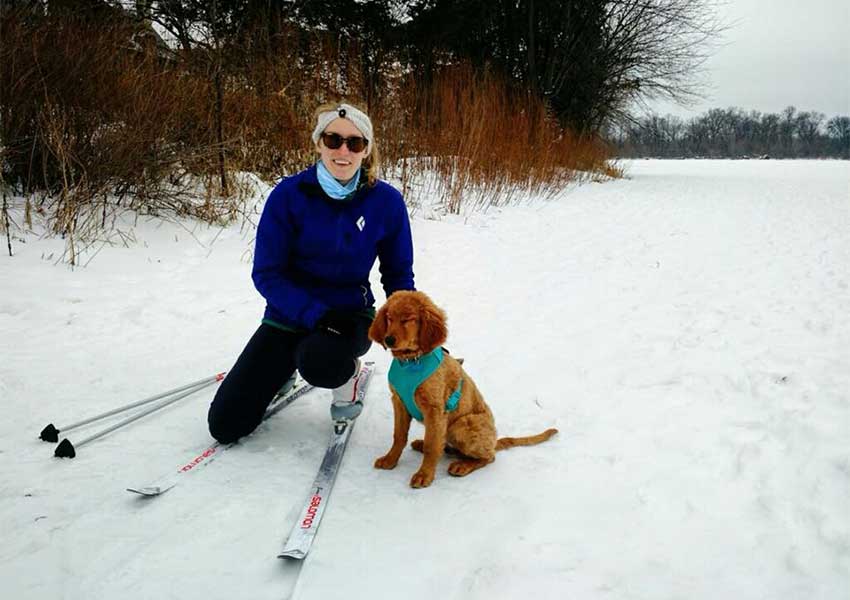
SHOULD MY DOG AND I KNOW ANYTHING SPECIFIC?
Before you hook up your dog, you should be confident in your cross-country skiing abilities. You don’t need to be an expert skier (many skijorers will admit they don’t have the best technique) but you need to be able to ski safely. Three Rivers offers a variety of lessons each winter.
You will also want to start training your dog during walks by associating actions with commands that you will use when skijoring.
For turns, the traditional mushing commands are "gee" (right) and "haw" (left). Some people simply say “right” or “left” to tell their dog which way to go, too.
Other important commands are "Line out" (tighten the lead line and wait), "Hike! Hike!" or "Let’s go" (pull and start moving), "Easy" (slow down) and "Whoa!" (stop).
One of my personal favorites is "On by," which helps Jasper stay on task when passing distractions like people or other dogs.
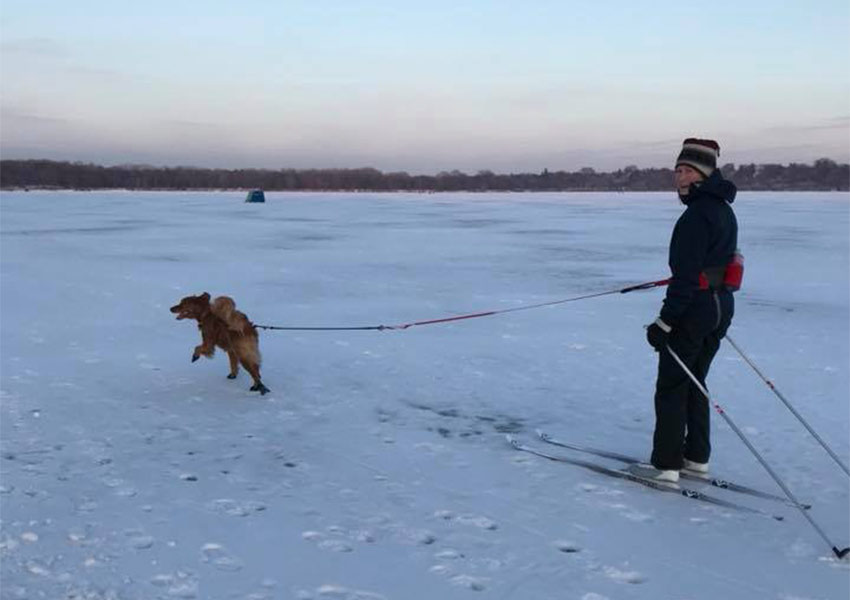
WHAT EQUIPMENT IS NEEDED?
When shopping for equipment, I highly recommend working with a local shop. They can discuss options and get you and your dog fitted for the right gear based on the type of skiing and skijoring you plan to do. Gear West, Midwest Mountaineering, and REI are local shops that sell equipment for both Nordic skiing and skijoring.
For ski equipment, you do not need to spend a lot to get started. Since I was on a budget, I used my existing classic touring skis for our first season. We had a lot of fun exploring ungroomed trails, but I quickly realized that Jasper wanted to feel the wind in her ears.
I refreshed my skate skiing skills and invested in some used skate equipment from Craig’s List. Ski swaps at ski shops in the fall are another way to find great deals.
For your harnesses and lead line, you’ll want skijor-specific equipment:
- A pulling harness for your dog. Pulling harnesses are different from walking harnesses, as they safely distribute the weight of pulling for your dog.
- A human harness with a quick release. In case of an accidental tangle — or squirrel chase through the woods — a quick release function helps keep everyone safe.
- A lead line. You can add an extender and use a running leash with a bungee component, but the lines made for skijoring have a better bungee system.
Some dogs, like Jasper, have furry paws that cause snow and ice to build up in their pads. I use a paw wax that helps prevent this. I also will combine paw wax with inexpensive fabric booties. Dogs typically resist the booties at first but will forget about them once they start running. If you have a chewer, put them on at the last minute, otherwise they’ll pull them right off!
FINDING THE SKIJORING COMMUNITY
Finding buddies has been important for our journey because Jasper is not a very motivated puller. We usually go with a friend whose dog is more motivated to pull and she’ll chase them. When we’re not with other skijorers, my husband and I take turns skiing a few minutes ahead. Because she is motivated to find her human, she pulls much more consistently.
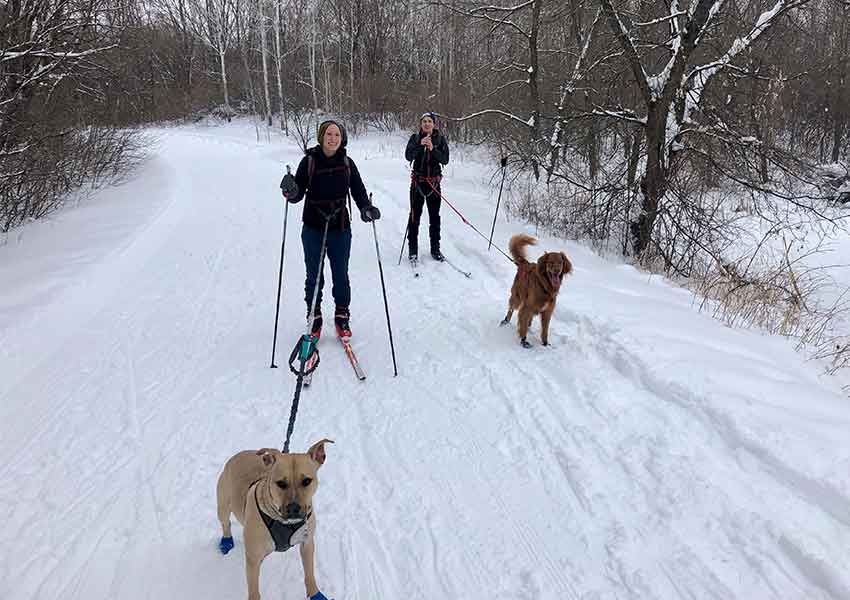
Three Rivers’ partners at K9 Powered Sports (formerly Skijor USA) host an active skijor community on Facebook. This group is a great forum for questions, trail recommendations, race notifications, off-season training suggestions and regular meet-up events. If you are looking for a friend or mentor, this group is a wonderful and welcoming place to start.
The Outdoor Recreation School of Three Rivers also hosts a clinic every November in partnership with local skijor groups and retail stores. In addition to learning the basics and trying equipment, you can meet others who are exploring the sport. Watch for details and registration in early August.
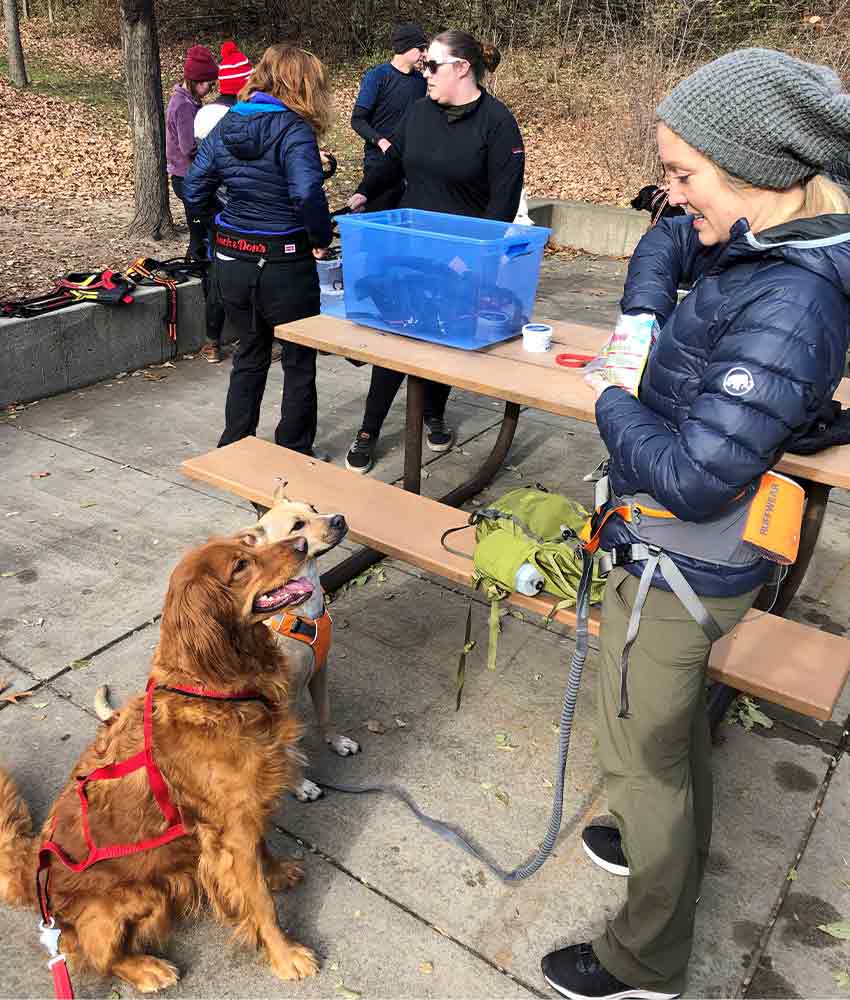
WHERE TO SKIJOR
Three Rivers offers over 20 miles of skijoring trails at six parks.
One of our favorite places to skijor is Elm Creek Park Reserve. The multi-use trail is well maintained and travels through scenic woods and prairie. It’s also the perfect distance for us at 4.3 miles.
Cleary Lake Regional Park is also a great spot to go if you’re learning and want a shorter loop (1.5 miles) on nicely groomed ski trails. A cross-country ski pass is required at Cleary Lake.
If you prefer a less groomed experience, Murphy-Hanrehan Park Reserve offers 5.7 miles of ungroomed multi-use trails to explore. I recommend classic skis for this one.
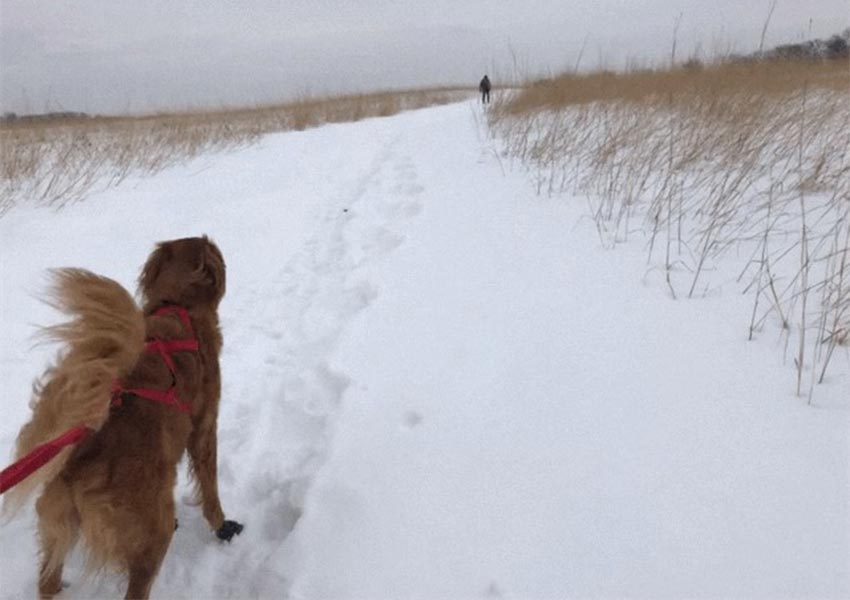
TAKING THE FUN TO THE NEXT LEVEL WITH RACING
Jasper and I have a lot of fun at races, even though we aren’t a competitive team. She is much more motivated to pull with other excited dogs around. Sometimes, she tries to greet the spectators instead of staying on course, which is part of the fun with a people-loving dog!
Each January, the Ski Rennet includes skijoring races and the 3K is great for beginners. Bring a friend to be your "dog handler" to keep your dog from getting tangled or running loose before the race starts.
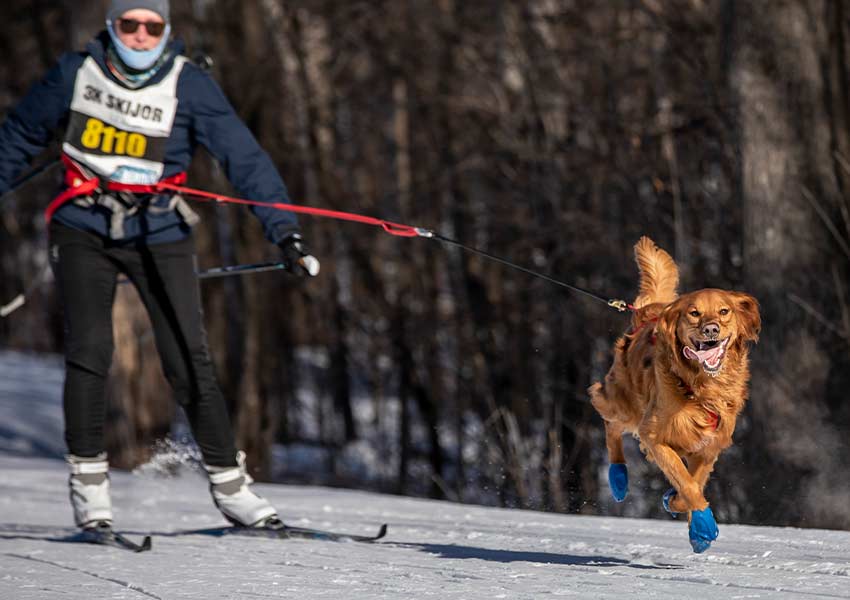
Skijoring has been a rewarding sport for Jasper and me. She loves the exercise, bonding with her humans, socialization and mental stimulation. We love watching her grow and be in her element — and the tired, content dog at the end of the day is a bonus.

About the Author
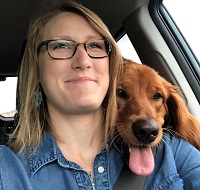
Jessica Allen is the Coordinator of the Outdoor Education Department at Three Rivers. She is passionate about preserving natural spaces and empowering the next generation of outdoor enthusiasts. She has coached climbing and college prep (separately), spent summers with the Forest Service and BLM, guided young people as a naturalist, and developed a variety of recreation education programs and events. Outside of work, Jessica enjoys long dog walks, rock climbing, cycling, world-wandering with her husband, spending time with family, and collecting new winter rec activities (although she’s a summer gal at heart).
Related Blog Posts
Happy Trails and Tails: Bringing Your Dog to the Parks
By: Mary Christine Kane
Three Rivers Park District offers ample opportunities for your dog to explore the parks. Learn some etiquette and safety tips to help ensure your visit is safe and full of tongue-hanging fun.
Best Trails for Cross-Country Skiing
By: Three Rivers Staff
Looking for a trail to get started cross-country skiing or prepare for the Ski Rennet on January 29? Check out this post from the archive to find our favorite cross-country ski trails in Three Rivers.
Tips and Tricks for Winter Biking
By: Anders Hanson
There are countless barriers (both perceived and actual) that prevent people from biking in the winter, but ultimately most of us already have much of the gear that makes winter biking comfortable, practical, fun, and safe. Learn some tips to overcome winter conditions and make winter biking seem less daunting.
